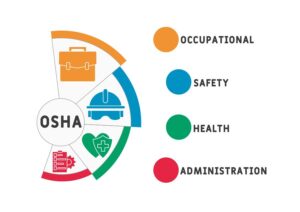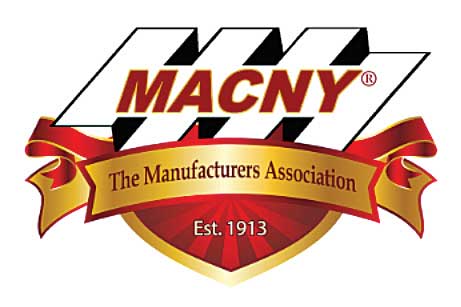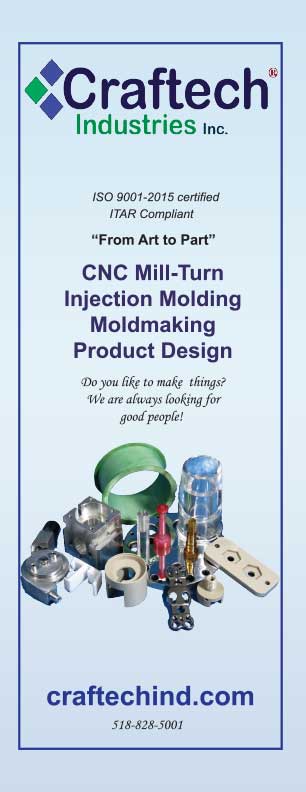News, Rules, Regulation And Legislation
THE MANUFACTURING ECONOMY
NY Fed Empire Manufacturing Survey:
Activity Expanded at a “Solid Clip”
Business activity grew at a solid clip in New York State, according to firms responding to the March 2021 Empire State Manufacturing Survey. The headline general business conditions index climbed five points to 17.4, its highest level since last summer.
- New orders increased modestly, and shipments were up substantially.
- Delivery times continued to lengthen, and inventories were somewhat higher.
- Employment levels and the average workweek both increased modestly. I nput price increases continued to pick up, rising at the fastest pace in nearly a decade, and selling prices increased significantly.
- Looking ahead, firms remained optimistic that conditions would impro ve over the next six months, anticipating significant increases in employment.
OECD More Than Doubles US Economic Growth Forecast
The Organization for Economic Co-operation and Development (OECD) has more than doubled its gross domestic product (GDP) growth forecast for the U.S. economy since making its last projections in December. At that time, the OECD said it expected real GDP growth of 3.2% in the US in 2021, but now it expects the U.S. economy to grow 6.5% this year. The OECD also upgraded its global growth forecast for 2021 to 5.6% from 4.2% in December. But, the biggest upgrade on a national basis was made to India’s GDP forecast, which the OECD now pegs at a blistering 12.6%, up from its forecast of 7.9% three months ago.
Survey: 88% of Manufacturers Optimistic About 2021
Most U.S. manufacturers are positive about growth in 2021, according to a new survey released by the National Association of Manufacturers.
A majority, 87.6% of 450 respondents, of small, medium and large businesses reported feeling at least somewhat positive about their company’s outlook in the first quarter of 2021, compared to the dismal 33.9% optimism low in the second quarter of 2020. Optimistic responses broke down into 27.3% of respondents who said they were “very positive” responses and 60.22% who were only “somewhat positive.” For many respondents, the specter of COVID-19 as a pressure on income is largely behind them: 32.9% of respondents, a plurality, said revenue at their company returned to normal before the current quarter. A smaller group representing 20.6% of surveyed manufacturers expect things to be back to normal by the second half of the year instead.
A “Once-In-A-Generation” Opportunity for US Manufacturers And Policymakers
Writing in Forbes Lisa Caldwell writes that while the crisis is far from over, there is now an incipient window of opportunity. A chance for firms to be reimagined and, crucially, for the U.S. manufacturing industry to take its place at the forefront of a postpandemic future.
Naturally, this opportunity must be seized not awaited. Yet responsibility for doing so shouldn’t rest solely with manufacturing companies. Yes, there are some things they – both individually and collectively – must do to grasp the nettle, particularly when it comes to attracting fresh talent and closing the skills gap. But it also requires decisive action from the government to make the U.S. a more attractive investment proposition for manufacturers at home and abroad. In the words of NAM’s chief economist, Chad Moutray: “We have to understand we’re in a global competition here. The dollars will flow to where the market is best.”
ENVIRONMENT SAFETY AND HEALTH
OSHA to Ramp Up Coronavirus-Related Inspections
The Occupational Safety and Health Administration (OSHA) launched a national emphasis program (NEP) March 12 in response to President Joe Biden’s Executive Order on Protecting Worker Health and Safety during COVID-19. The NEP means OSHA will focus enforcement efforts in the coming months on coronavirus-related inspections. In a press release announcing the NEP, the agency made clear it will prioritize companies that put the largest numbers of workers at serious risk of contracting the coronavirus and employers that retaliate against workers who exercise rights protected by federal law or make complaints about unsafe or unhealthy conditions.

OSHA Proposes HazCom Standard Changes
The Occupational Safety and Health Administration (OSHA) has proposed a new rule to update its Hazard Communication Standard (HCS) to bring it into alignment with the latest version of the United Nations Globally Harmonized System of Classification and Labeling of Chemicals (GHS). OSHA’s proposed modifications to the standard include codifying enforcement policies currently in OSHA’s compliance directive, clarifying requirements related to the transport of hazardous chemicals, adding alternative labeling provisions for small containers and adopting new requirements related to preparation of Safety Data Sheets (SDS).
U.S. Formally Rejoins Paris Agreement as Biden Rolls Out Ambitious Climate Program
One of President Biden’s first directives confirmed his new administration’s intention to formally rejoin the Paris Agreement on climate change. This will occur on February 19, 2021 in a landmark move designed to reshape global climate policy for years to come. The U.S. re-adoption of the key goals set by the United Nations Framework Convention on Climate Change (UNFCCC) is widely seen as an opening to Biden’s USD 2 trillion clean energy program and environmental leadership drive, which were promised during his election campaign and have since been outlined in an executive order.
Details Slow to Emerge for New York Climate Law
The New York Climate Leadership and Community Protection Act’s renewable energy and other targets are among the most rigorous of any major economy in the world, according to Governor Andrew Cuomo’s office, but uncertainty remains regarding how those targets will be met. The law itself is a framework that outlines the state’s desired goals and creates a host of committees and working groups to develop the regulatory and other mechanisms that will achieve the goals. With important milestones coming due, the drastic redesign of the state’s power system envisioned within the law will start taking shape over the coming months.
For more details read Couch White’s Robert Loughney’s article on page 16.
LABOR AND EMPLOYMENT
NYS Time Off for Vaccine Law
Effective immediately, New York State employers must provide employees with up to four hours of paid time off per COVID-19 vaccination. The new law sunsets on December 31, 2022.
The new law provides that:
- All New York employees must receive a paid leave of absence for “a sufficient period of time” not to exceed four hours per vaccine injection. In other words, employees may be entitled to up to eight hours of paid time off if receiving a two-injection COVID-19 vaccine.
- This leave must be paid at the employee’s regular rate of pay.
- Employers cannot require employees to use other available leave (such as sick leave or vacation time) before providing this leave.
The new law applies to both public and private employers, with potential carveouts for employees subject to a collective bargaining agreement.
COVID-19-Related Employment Litigation Affecting Manufacturing Industry
Manufacturing employers probably will continue to see an increase in COVID-19-related litigation affecting the industry. Keeping up with recent trends in COVID-19-related litigation can help manufacturers ensure compliance with the common bases of alleged violations. Nationwide, manufacturers have seen one to seven new COVID-19-related employment complaint filings a week since the beginning of April 2020. Such litigation is likely to continue to rise given the volume of filings over the past 10 months.
COVID-19-related litigation in the manufacturing industry generally fall into six categories:
- Contract
- Disability, leave and accommodation
- Discrimination/harassment
- Retaliation/whistleblower
- Wage and hour
- Workplace safety and conditions
Of these filings, nearly half fall under the “Disability, Leave and Accommodation” category.
Highlights of the Council of Industry’s 2020 Compensation and Benefits Survey
Completed by 31 Hudson Valley manufacturing businesses.
The survey was conducted with the support of Ethan Allen Personnel Group and Rose & Kiernan Insurance over parts of November and December 2020.
- 55% of the firms had between 51 and 100 employees, 23% between 101 and 250.
- 100% of the respondents offered their employees medical insurance.
- 75% of the respondents paid more than 75% of the total premium.
- All but one firm offered a retirement plan with 401(k) plans, being by far the most common.
- 90% of the firms reported challenges hiring key positions.
- Tool Makers, CNC Machinists, CNC Operators, Clean Room Technicians, and Maintenance Mechanic are the most frequently cited difficult to fill positions. Also mentioned are Electro-Mechanical Technicians, Engineers, and Scientists.
- 32% of firms offered an apprentice training program.
- 61% of these programs were recognized by the Department of Labor.
- Entry level production workers can expect to earn $24,960 per year their first year in that role, and those workers average $31,243 per year.
- Maintenance Mechanics can expect to earn $46,957 per year to start, increasing to more than $65,242 per year.
- In all data was reported on 101 positions.
“The data in this survey reinforces what we know about careers in manufacturing – it confirms that these positions pay well and provide solid benefits,” said Harold King, Council of Industry President. “What it doesn’t necessarily show is how rewarding they can be. This year the pandemic helped us see how essential manufacturing is – from providing the food and technology we relied on during lockdowns to the personal protective equipment that kept us safe, to the laboratory equipment that helped produce the vaccines. People make those products, and they make them right here in the Hudson Valley.”
Council of Industry Teams with Ulster County to Fill Entry Level Manufacturing Jobs
Ulster County’s economic development and workforce development offices are working with the Council of Industry and the Small Business Development Center (SBDC) to fill the entry level positions at Ulster County manufacturing businesses. A portal on the Council’s Jobs Board, www.HVMfgJobs.com, will be created where positions will be posted.
The SBDC will counsel businesses on ways to make their positions more attractive. County officials will help candidates search and apply for the jobs as well as consider improving their skills at Ulster Community College. In addition to providing the portal on the jobs board the Council of Industry will promote its MIAP Apprentice program to both companies and candidates.
“Across the U.S., manufacturing activity is up, yet it is increasingly difficult to attract talent to our sector. Manufacturers need to do more if they are going to fix this problem including looking closely at their compensation packages, providing apprenticeships as well as other training and offering clear career paths.”
– Johnnieanne Hansen, Vice President Council of Industry
More than 77% of SMMs Expect to Continue Struggling to Identify Talent
Despite a dramatically altered labor market, manufacturers consistently suggest that they have trouble attracting and retaining sufficient workers. More than 77% of small and medium-sized firms expect to continue struggling to identify talent in 2021 and beyond, according to a new survey from The Manufacturing Institute and BKD, a national CPA and advisory firm.
“Across the U.S., manufacturing activity is up, yet it is increasingly difficult to attract talent to our sector.” said Johnnieanne Hansen, Council of Industry Vice President. “Manufacturers need to do more if they are going to fix this problem including looking closely at their compensation packages, providing apprenticeships as well as other training and offering clear career paths.”

COVID-19 has Boosted the Campaign Against Exams in American Schools
COVID-19 has put a wrench in school exams. With support from the Trump administration, all 50 states cancelled accountability testing last March, freeing 51m public-school pupils from the annual rigmarole. The SATs optional essay-writing section and separate subject tests were discontinued this year. The Program for International Student Assessment, an exam measuring the academic performance of OECD member countries, and the National Assessment of Educational Progress (NAEP), a nationwide exam administered to a sample of American pupils, have been postponed too.
Abandoning testing could be disastrous, warns the Fordham Institute, a think-tank, in a recent report. Cancelling tests again would make it hard to know how schools fared during the pandemic. “I would personally be in favor of more effort to get as many kids as possible tested, so that we know what is going on,” explains Cory Koedel, who co-wrote the report. “I think some kids are actually probably doing ok. And some kids are doing really terrible. And I don’t think we know exactly who’s who.”
BENEFITS OF PARTNERSHIP

Additional Online Training Opportunities for Council Members
The Council of Industry is partnering with its sister organization, the Manufacturers Association of Central New York (MACNY), to provide expanded training opportunities to our members. One change the pandemic has accelerated is the broad acceptance of remote and online learning. This newfound acceptance has created an opportunity for the Council of Industry to partner with other manufacturer associations to broaden the manufacturing centered training offerings we deliver to our members.
Beginning last month Council members can access several offerings from MACNY including Project Management, OSHA 10 and 30 Hour, ISO internal Auditor and many more. Watch your inbox for our weekly calendar which will begin to include these offerings alongside our own.


